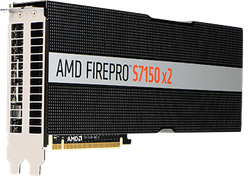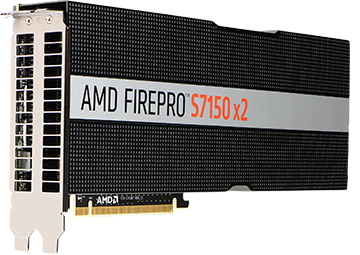
Oct. 17, 2016
By: Michael Feldman
Advanced Micro Devices (AMD) has announced a partnership that will bring its Radeon GPUs into the Alibaba Cloud. The GPUs will be used to power some number of the hyperscaler’s cloud servers in order to boost adoption of its cloud-based services.
Although the press release did not specify the scope of the upcoming GPU deployment, Alibaba runs one of the largest public clouds in the world and claims to serve more than 1.4 million customers. Its infrastructure includes five datacenters across China (Beijing, Hong Kong, Shenzhen, Hangzhou, and Qingdao) as well as two in the US (Silicon Valley), and one in Singapore. Additional centers are planned for Europe, Asia, and the Middle East.
 The GPU in question is AMD’s Radeon FirePro S7150 x2 GPU, a graphics processor designed for the kinds of virtualized applications typically found in cloud computing: remote desktop serving, online gaming, and other types of cloud-based workloads that benefit from the kind of streaming throughput available in modern GPUs. That seems to be what Alibaba has in mind here, although there is nothing to prevent would-be cloud customers from running more typical HPC and deep learning applications on these devices.
The GPU in question is AMD’s Radeon FirePro S7150 x2 GPU, a graphics processor designed for the kinds of virtualized applications typically found in cloud computing: remote desktop serving, online gaming, and other types of cloud-based workloads that benefit from the kind of streaming throughput available in modern GPUs. That seems to be what Alibaba has in mind here, although there is nothing to prevent would-be cloud customers from running more typical HPC and deep learning applications on these devices.
The S7150 x2 is a mid-range server GPU that offers 3.8 single precision teraflops and 250 double precision gigaflops, along with 8 GB of GDDR5 memory. When running at full tilt, the PCIe x16 card draws 150 watts. It roughly corresponds to NVIDIA’s GRID K1 offering, another GPU aimed at virtualized visualization. For the sake of comparison, AMD’s top-end server GPU, the S9300 x2, provide13.9 single precision teraflops/870 double precision gigaflops and 8 GB of High Bandwidth Memory (HBM), while drawing 300 watts. That one is definitely geared for scientific workloads and deep learning applications.
The collaboration with AMD is an interesting one for Alibaba, which in January revealed a partnership with NVIDIA to deploy Tesla K40 GPUs in its cloud specifically for HPC and AI work. Alibaba’s choice of Radeon GPUs was probably driven by operational expense (think power costs) as they relate to virtualized graphics processing. Not that one would expect any sort of brand loyalty from a hyperscale firm, or for that matter any other IT buyer.
Obviously this is good news for AMD, which has struggled to compete with NVIDIA Tesla GPUs in the datacenter. Getting a high-profile win like this might help AMD’s cause in its attempt to mount a broader comeback with its upcoming Vega GPUs. Stay tuned. Things could get interesting.
